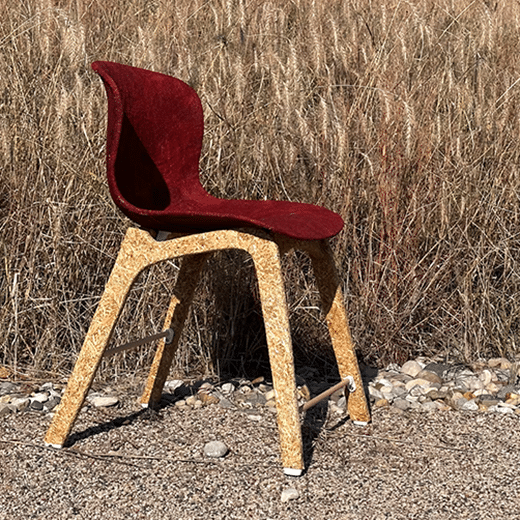A selective transition from conventional plastics, metal, and timber to renewable bioplastics presents significant opportunities for curbing emissions and landfill loads. When bioplastics are blended with crop fiber, an abundant waste product of agriculture, they make resilient composites that can displace the plastics and monoculture lumber in engineered timber. In this case study, an ergonomic task chair is built from scratch using experimental biomaterials and digital prototyping methods. Historically, the chair has been the platform to experiment with new means of production in a discourse over emerging technologies and novel materials. This “Fiber Chair” is free from petroleum ingredients, made from more than 98% biomaterials, completely compostable, and has a fraction of the footprint of conventional competitors. Three different molding processes are prototyped and discussed in detail (compression, lamination, and injection) to explore the challenges and opportunities in transitioning to bioplastics in the building trades. Results from early sample testing and life cycle assessments are shared with consideration given to future applications.
Year: 2024
- Paper Type: Case Study
- Education Symposium Theme: Design Disrupted
